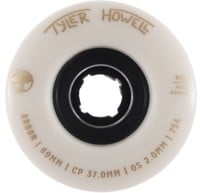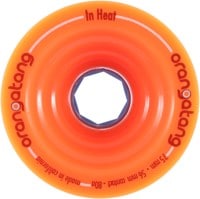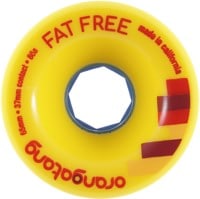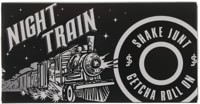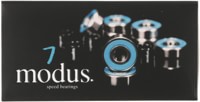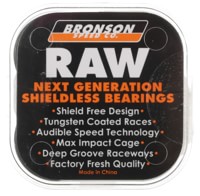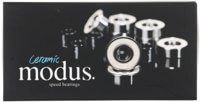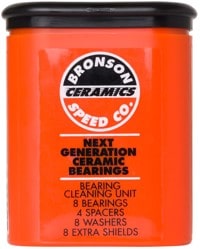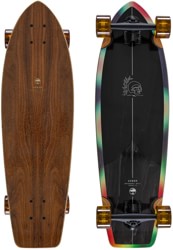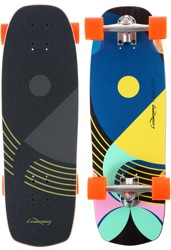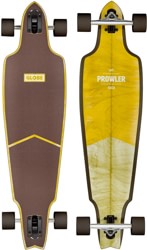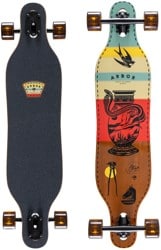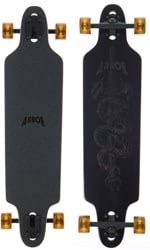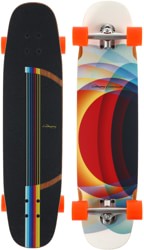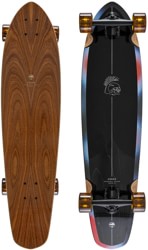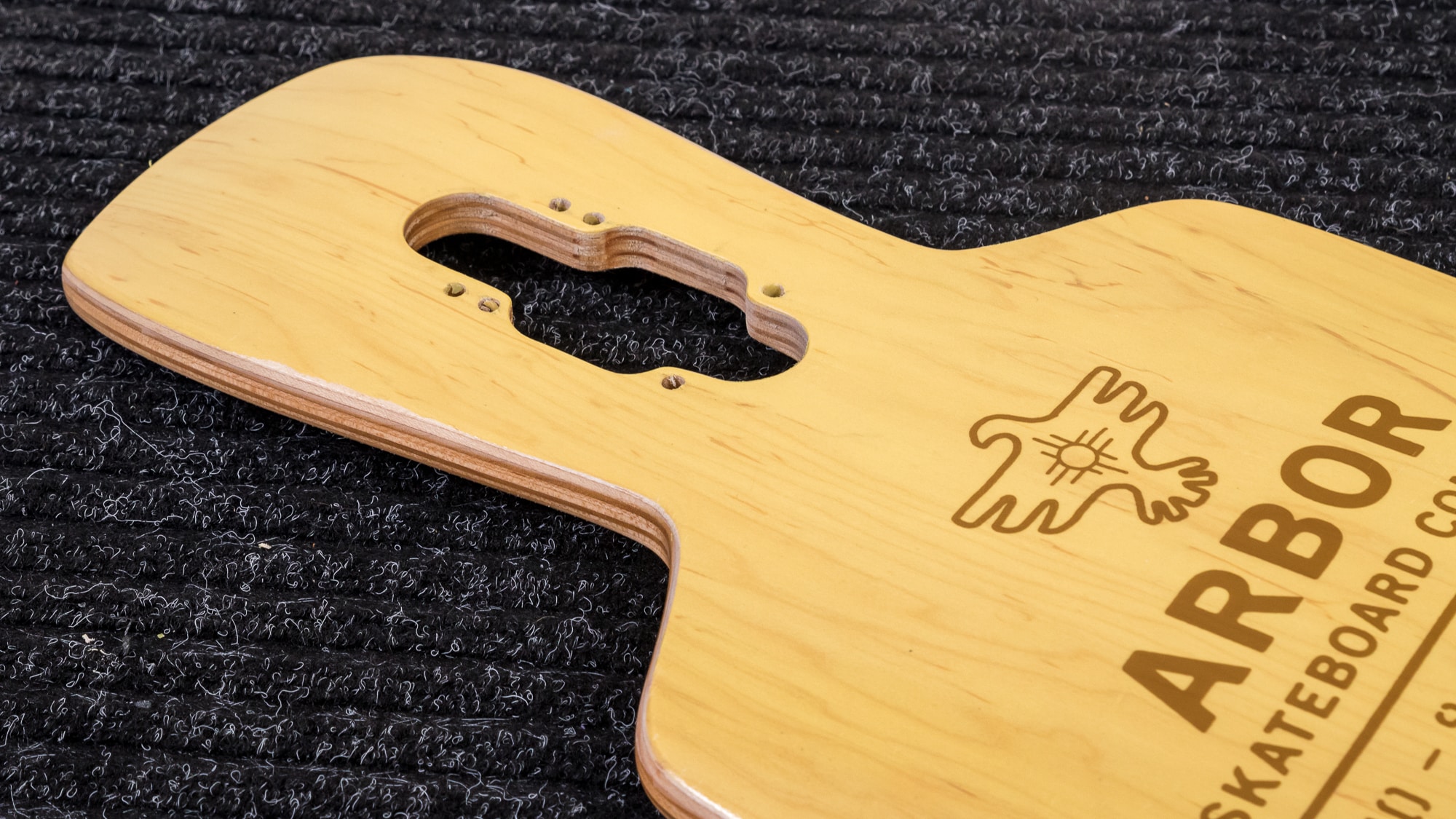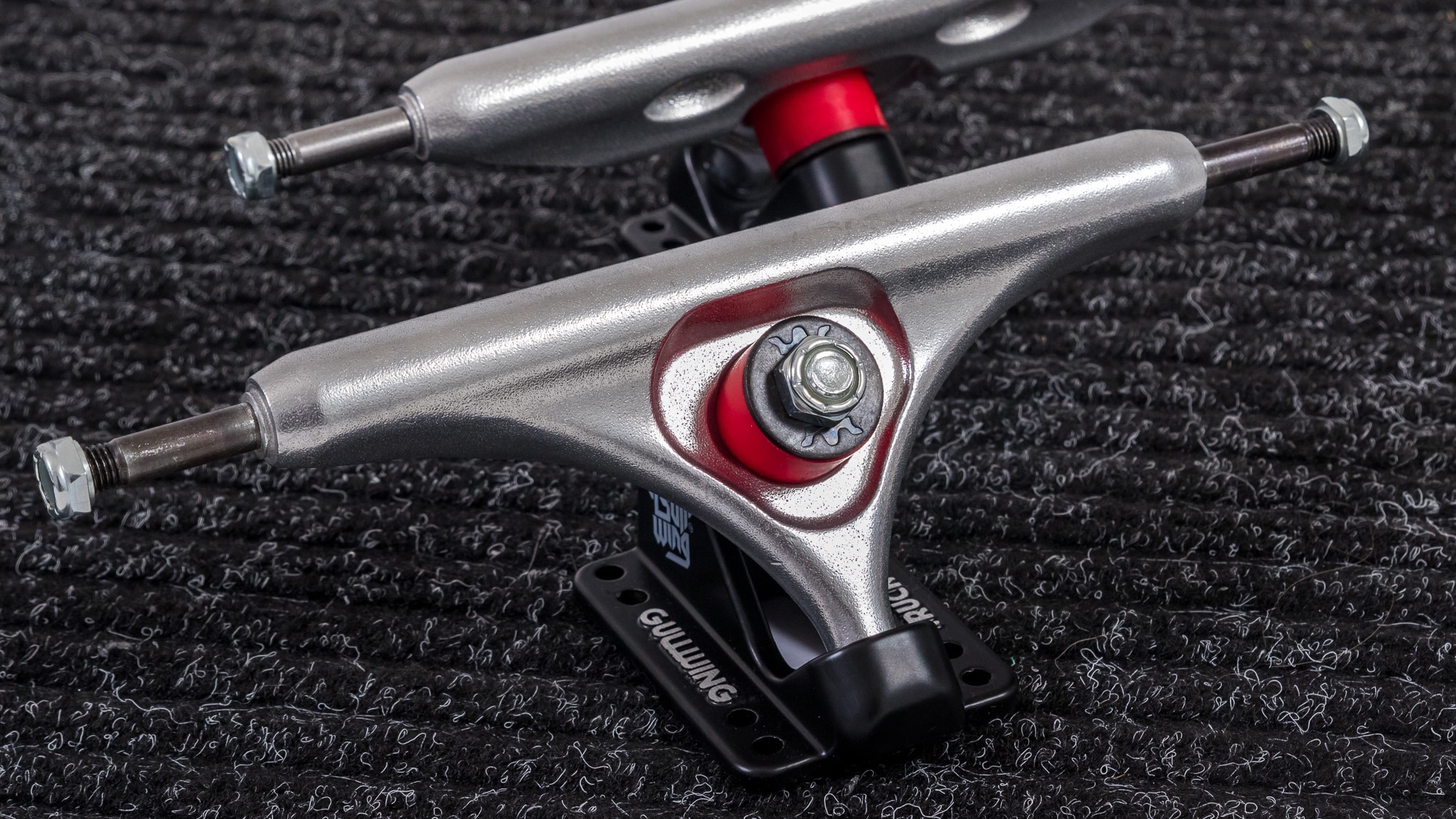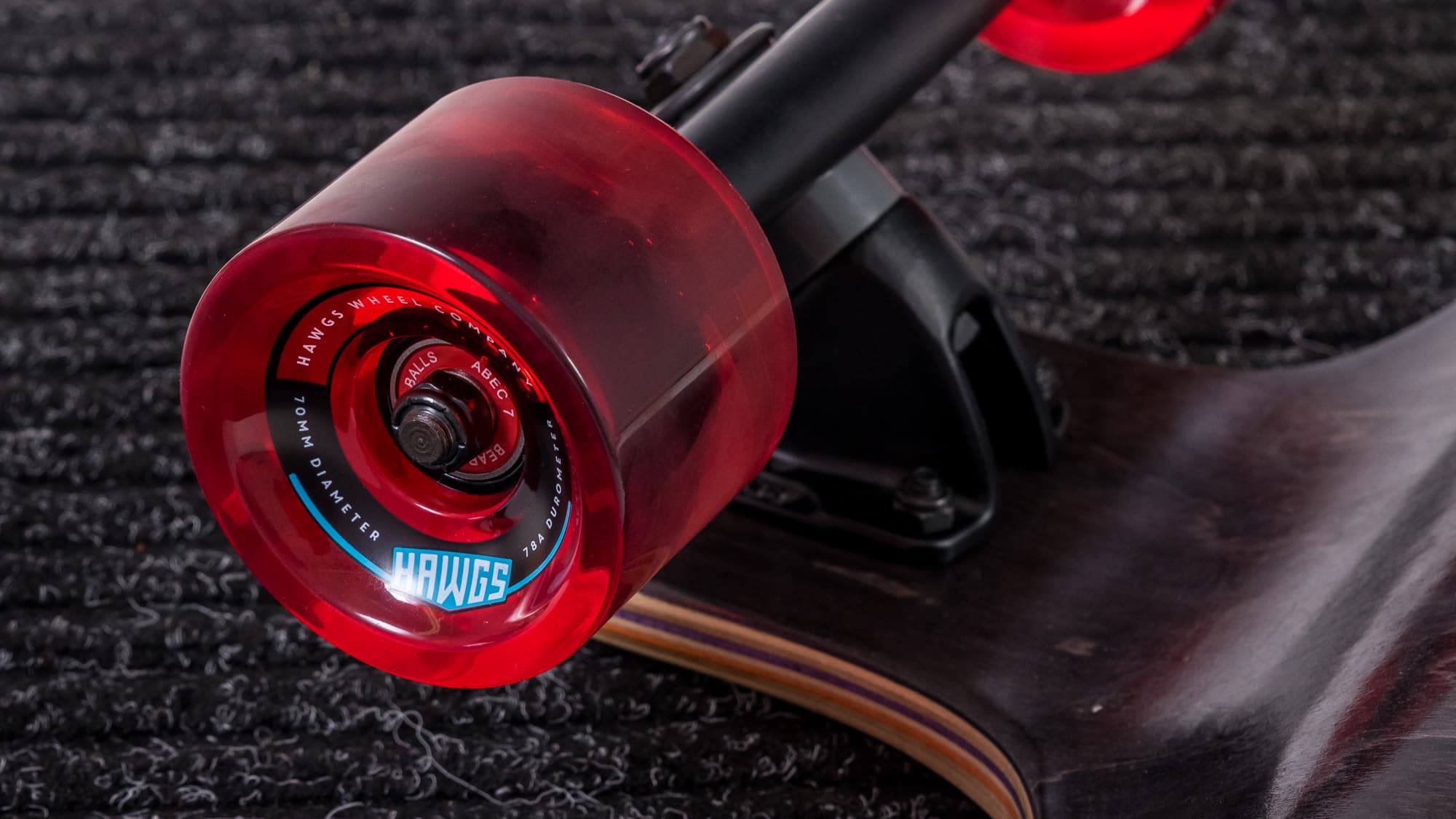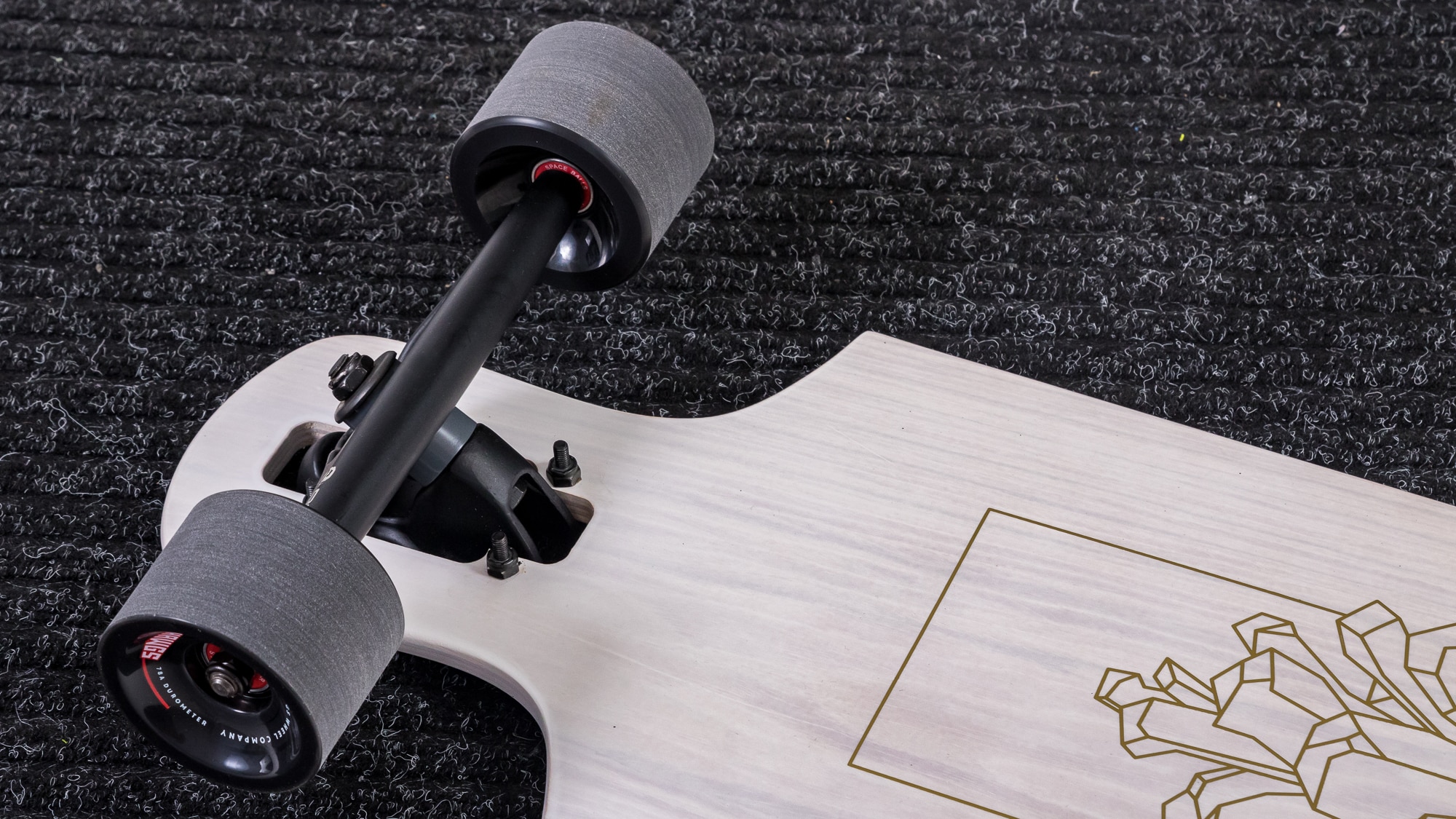Longboard Buying Guide
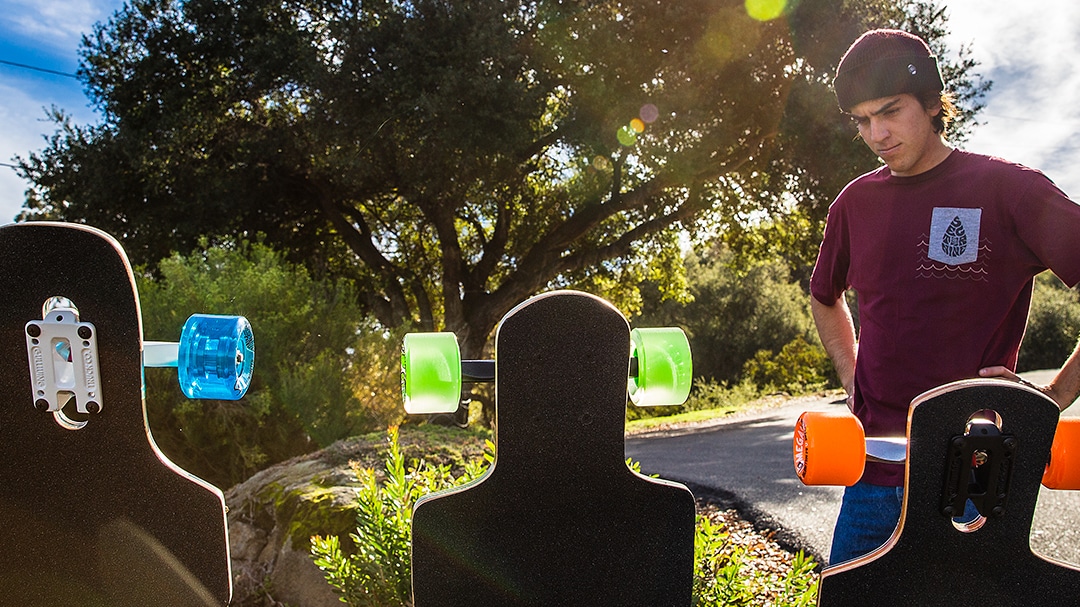
From campus cruising to mountain bombing, this guide will teach you everything you need to know about longboards so you have the knowledge to choose the right one for your riding style.
Here’s what we’ll cover:
Parts
Deck
Longboard decks are typically made from seven to ten plies of wood, glued and pressed together to create the platform for your feet. They come in a wide variety of shapes and sizes, but most range from 35-40" long and roughly 8 ½-10'' wide.
Visit our Choosing a Longboard Deck guide for more info on how to choose the best longboard deck for you.
TRUCKS
Longboard trucks allow the board to turn and provide axles for the wheels. Reverse kingpin trucks are most popular for longboards, but standard kingpin trucks are also a great option for many smaller longboard setups. To match the width of longboard decks, most longboard trucks have a 150-184mm hanger or a 9-10" axle, providing riders with a more stable base for higher speeds and cornering.
Visit our Choosing Longboard Trucks guide for more info on how to choose the best longboard trucks for you.
WHEELS
Longboard wheels mount on the truck axles and provide housing for the bearings. They are generally much larger and softer than park/street skateboard wheels skateboard to provide smoother, faster ride on all surfaces. They usually fall between 64-80mm in diameter and have contact patches of 38-70mm.
Visit our Choosing Longboard Wheels guide for more info on how to choose the best longboard wheels for you.
BEARINGS
Bearings fit inside the sides of the wheels and allow them to spin freely. Longboards use the same universal industry standard 8mm 608 size bearings. Bearings can play a big role in how fast your longboard rolls.
Visit our Choosing Skateboard Bearings guide for more info on how to choose the best longboard bearings for you.
Types
Like their smaller counterparts, longboards can be ridden in an infinite number of ways. Below are the most popular types of longboards that are designed to do everything from transportation, dancing, and freestyle tricks to slashing driveways and racing mounting roads.
Longboard Cruisers
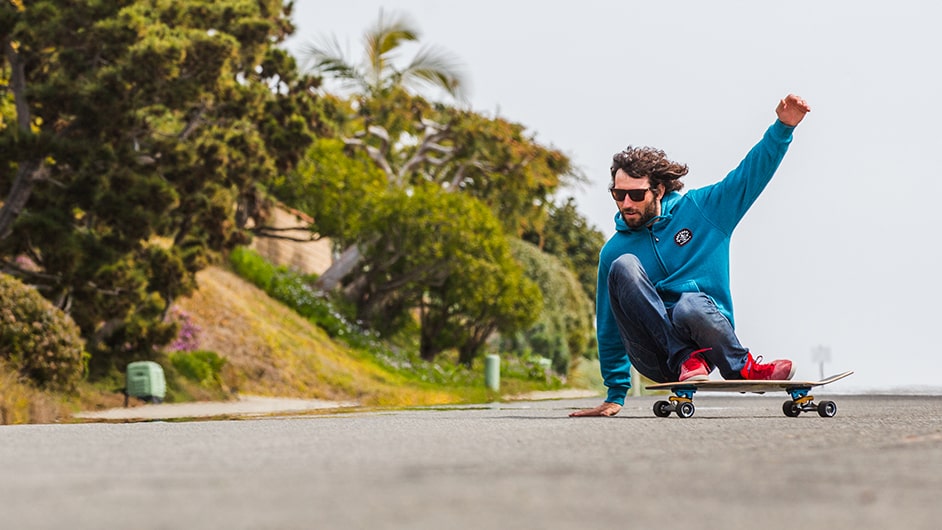
If you're looking for a versatile setup for getting around town, a cruiser is what we recommend. Typically between 28-35" long, these boards blur the line between longboards and skateboards with a small sizes and kicktails for making it up cracks, curbs, and around tight corners. This makes them perfect for and dodging obstacles in the city.

Commuters
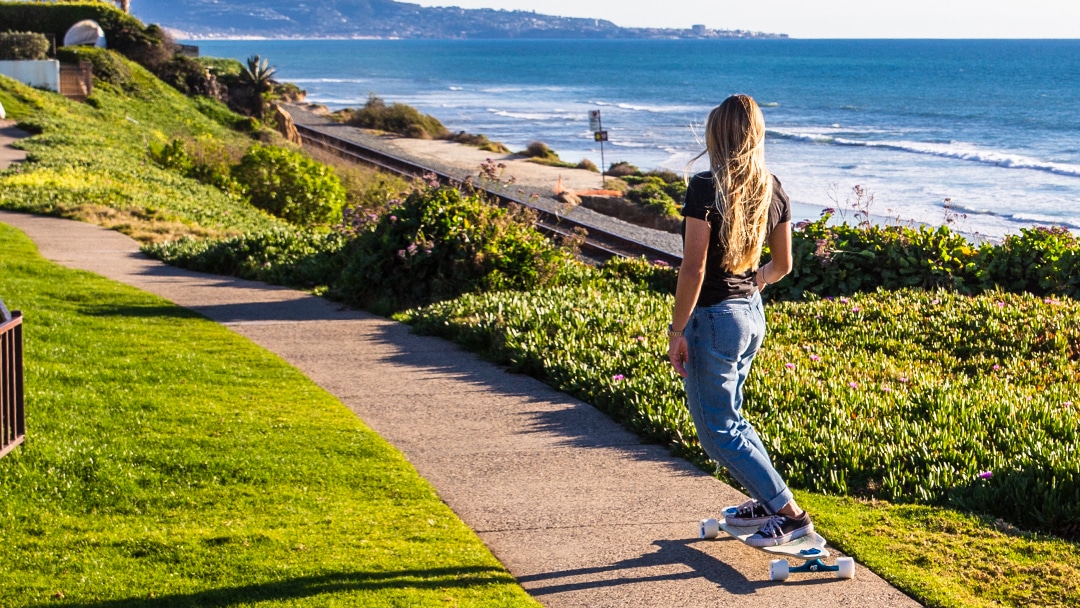
If you have a long road ahead, a longer wheelbase and larger wheels will provide more stability and faster roll speed to get you there without draining your tank. We recommend choosing drop through and/or drop down decks to lower your center of gravity and save some extra energy on every push.
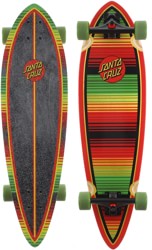

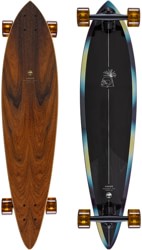
Carvers
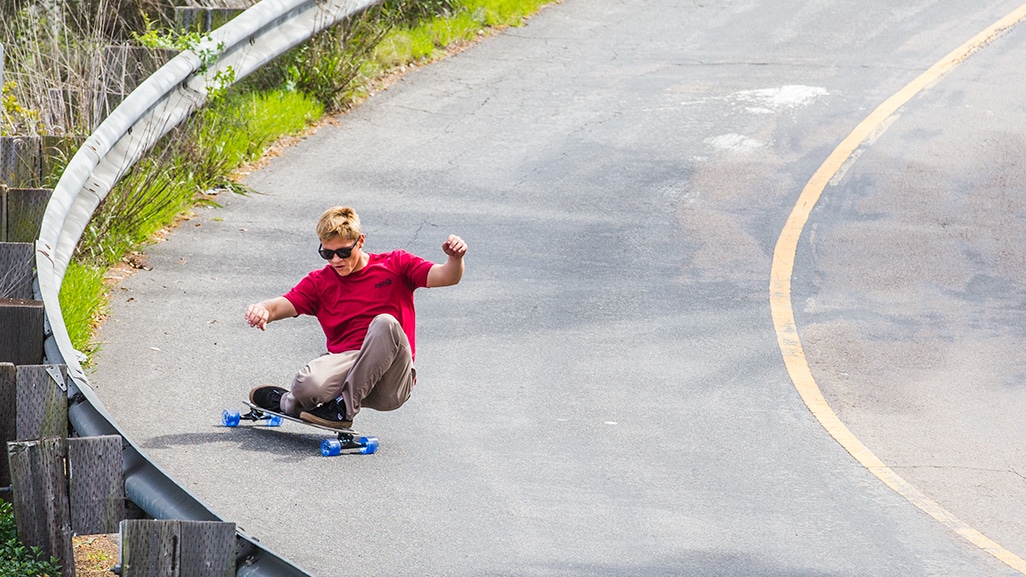
If you just love the feel of gliding down a mellow hill, path or street, these fun setups will give you a fun surfy feel that is hard to match. Carving longboards come in many sizes, but typically have a flexible construction to give you lively snap to your carves.
Freestyle
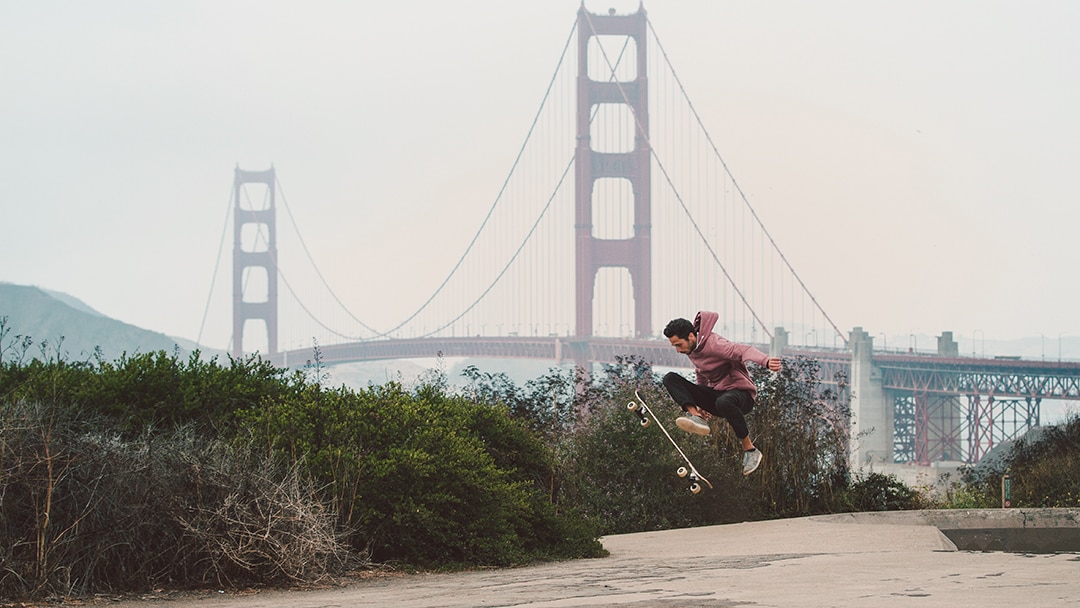
Freestyle longboards are the most versatile types of longboards because they're designed to blend many styles of skateboarding and longboarding. They are typically medium sized (35-40" long) with a symmetrical shape, flexible construction and kicktails on both ends. This allows riders to get creative with flat ground tricks and fancy footwork, but also makes them ideal for beginners who want to learn a little bit of everything from carving and cross-stepping to sliding and hill bombing.
Freeride
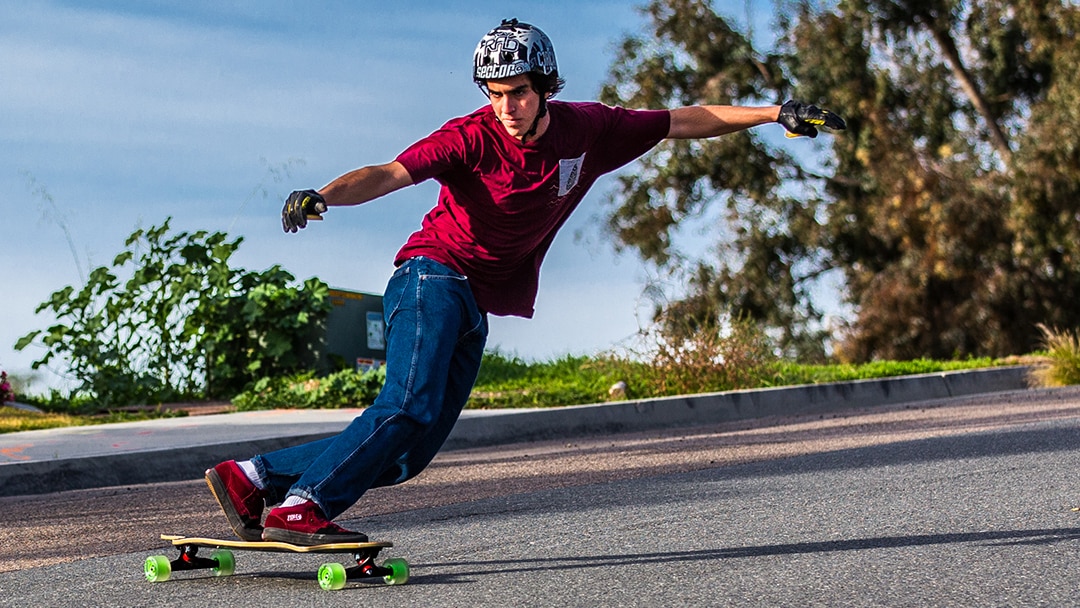
Freeride longboards are designed to conquer steep roads and paths while sliding from side to side like a snowboard. They typically have symmetrical shapes with deep concave to lock your feet in place when slashing driveways, performing spins, switch slides and drifting corners. Freeriders generally use small to mid sized wheels (60-70mm) with narrow contact patches (29-55mm) and rounded lips. These wheels make it easier for the rider to break traction and hold out long slides.
Downhill
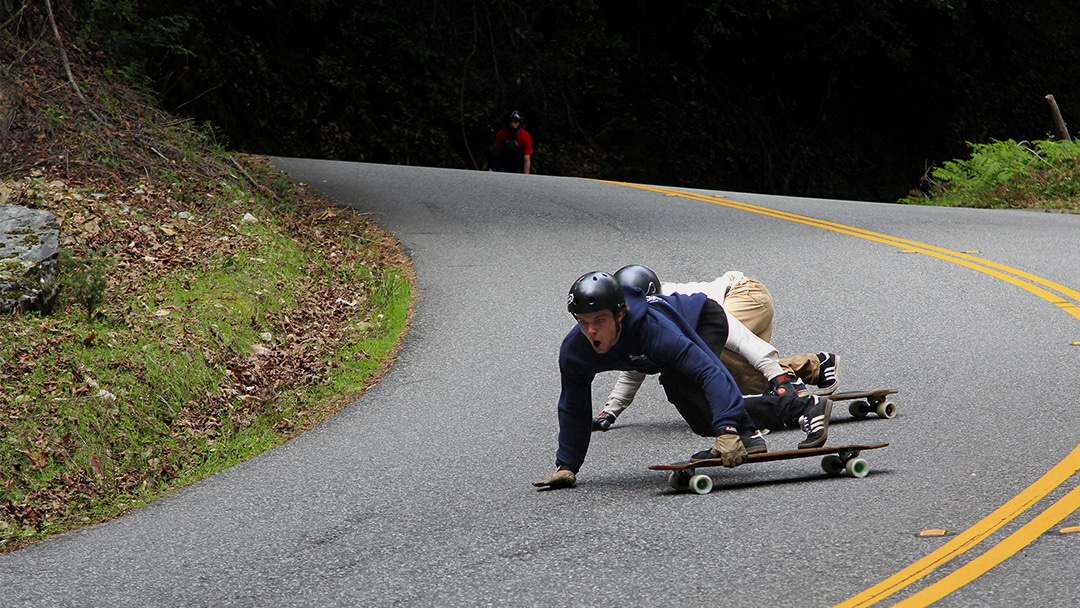
If you want to go fast, drift corners and race your friends, you need a downhill longboard that can handle the high speeds and sharp turns of mountain roads. Downhill setups usually include directionally shaped decks with very stiff constructions, large wheels (70-80mm) with wide contact patches (50-70mm) and sharp lips to provide maximum speed and grip through corners. For beginners, we recommend choosing a board with a wheelbase of at least 25".
How to Stop
Like any vehicle, a longboard is only safe to ride if you know how to stop it. Here are several different braking techniques that will help you stay safe and in control while enjoying your ride:
- Foot brake – This is the most important technique to learn when you are first getting comfortable on any type of longboard or skateboard. It is preformed by taking your pushing foot off your board and dragging the sole of your shoe along the road to decrease your speed. Foot braking will do some damage to you shoes but is by far the safest and most effective speed control technique in almost every situation. You should be a confident foot braker at every speed you ride at.
- Carving – Carving is a basic longboarding and skateboarding technique that involves smooth continuous turns from side to side. Carving is usually just for fun, but it can also help control your speed. Wide, deep carves will help slow your acceleration but will not slow you down much.
- Air brake – Air braking uses wind resistance to slow down at high speeds. Standing upright, the rider stretches his arms out to either side to slow down a small amount. This technique is usually used in combination with long exaggerated carves for additional speed loss.
- Sliding – Also called a power slide, this type of braking is mainly used by downhill and freeride longboarders/skateboarders to maintain a consistent speed, slow down quickly before corners, or come to a complete stop at the end of a run. Essentially, the rider makes a rapid, controlled turn to break the traction of the wheels and pitch the board sideways. The rider often uses slide gloves to place their hand on the road to steady himself. For this reason, slide gloves are essential accessories for most downhill riders. The first and most important hands down slide that everyone should learn is the pendulum or shut down slide.
- Sit brake – This is where a rider sits down on his board, sled-style, and uses his outstretched feet to slow the board to a stop. This technique will slow you down very quickly but it is difficult to get in and out of the sitting position, so it is typically only used to slow to a stop at the end of a run.
- Run outs – This should only be done as a last resort. Running out is basically bailing off your board and taking quick steps to slow yourself down from running speed. There are can be quick and painful consequences to using this technique and it is only effective if you can run as fast as you are rolling when you jump off your board.
If you are a beginner that is not comfortable using these breaking techniques, make sure that you never ride a hill that you can't ride out. This means starting on hills with a long, flat, or uphill section at the bottom, allowing you to slow to a stop over some distance. This will give you a safer environment to practice your braking techniques and provide you with an exit strategy if you get going too fast for your comfort.
Keep Learning
Still Have Questions?
We’re here to help. You can call, email, chat or IM during business hours seven days a week. Our customer service staff skates…a lot. They know their stuff and are happy to help you with all things skate.










